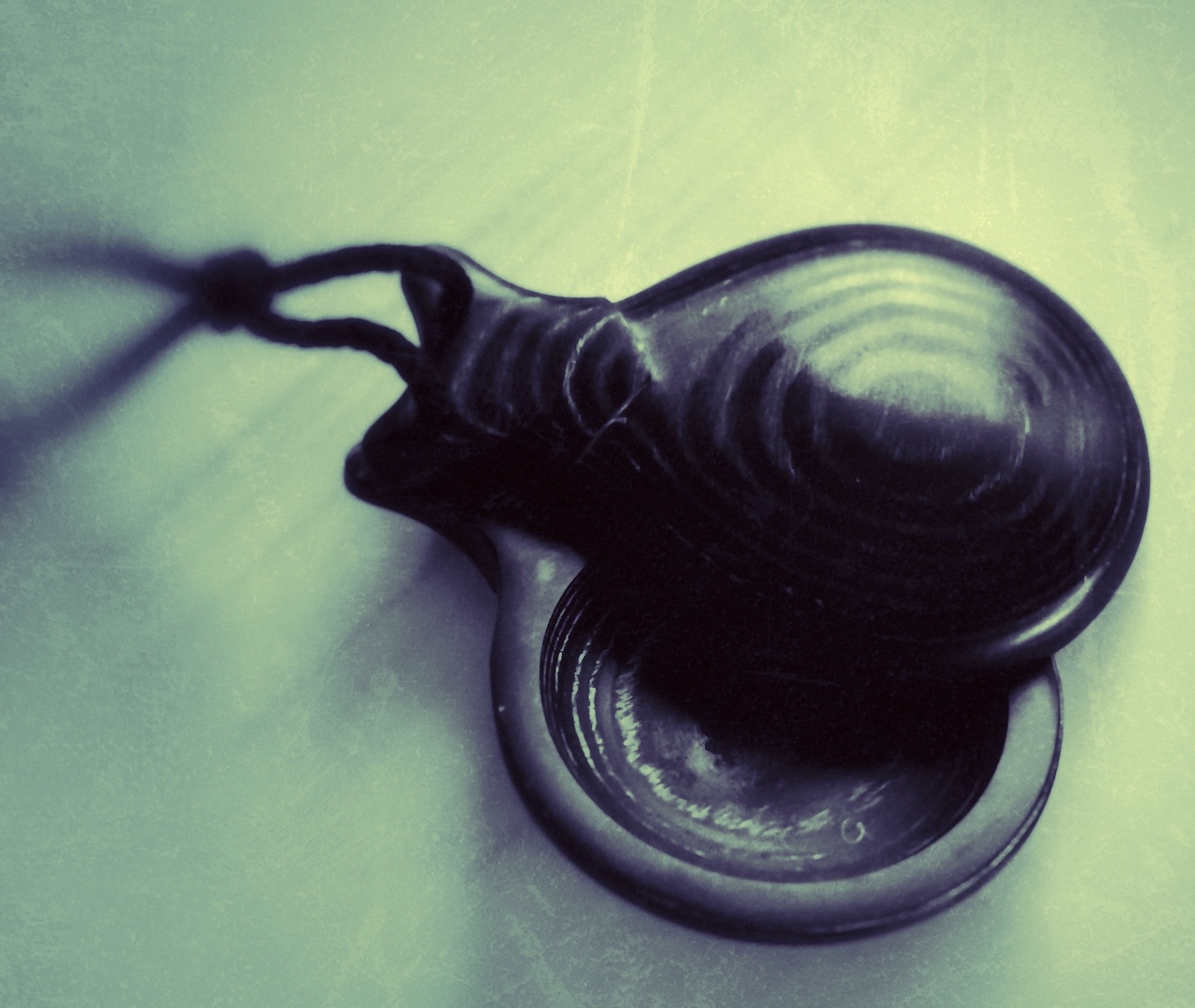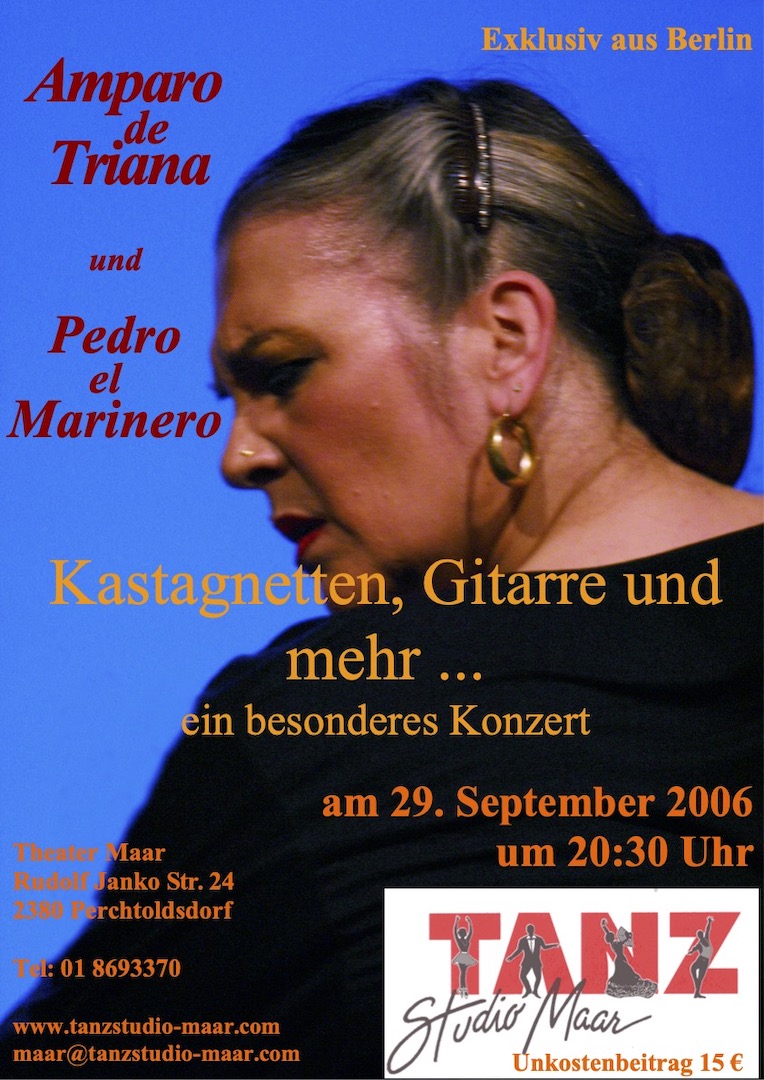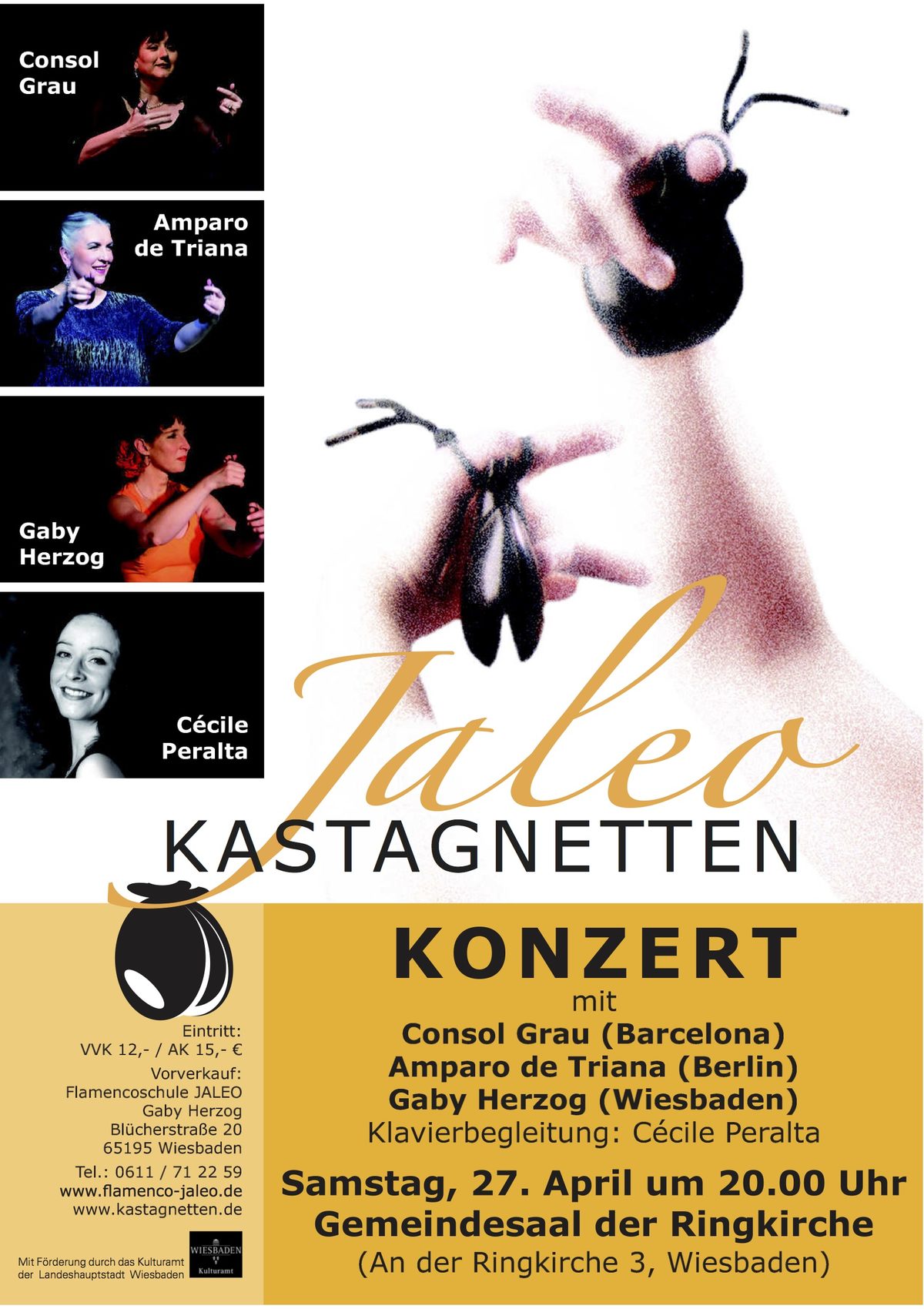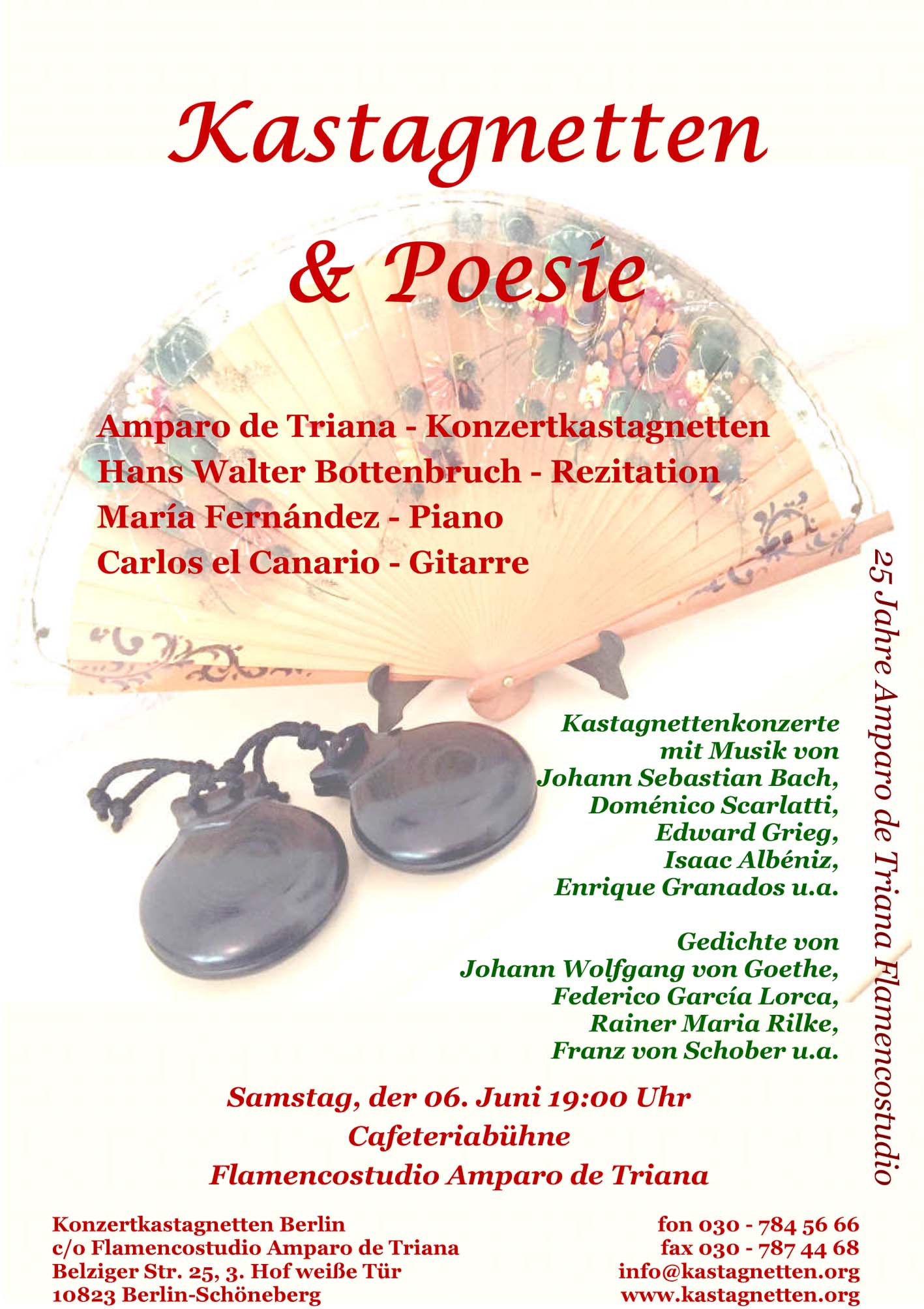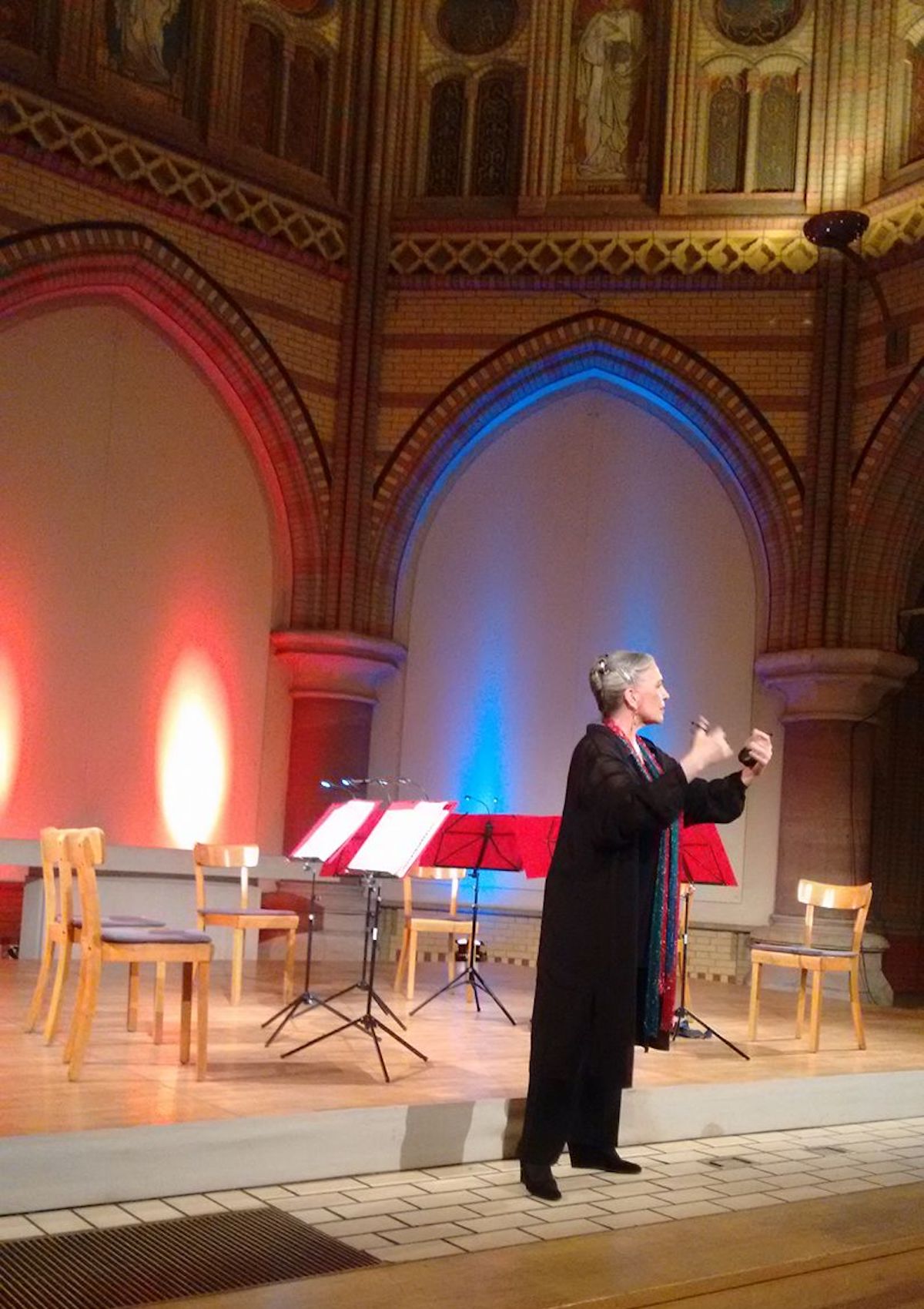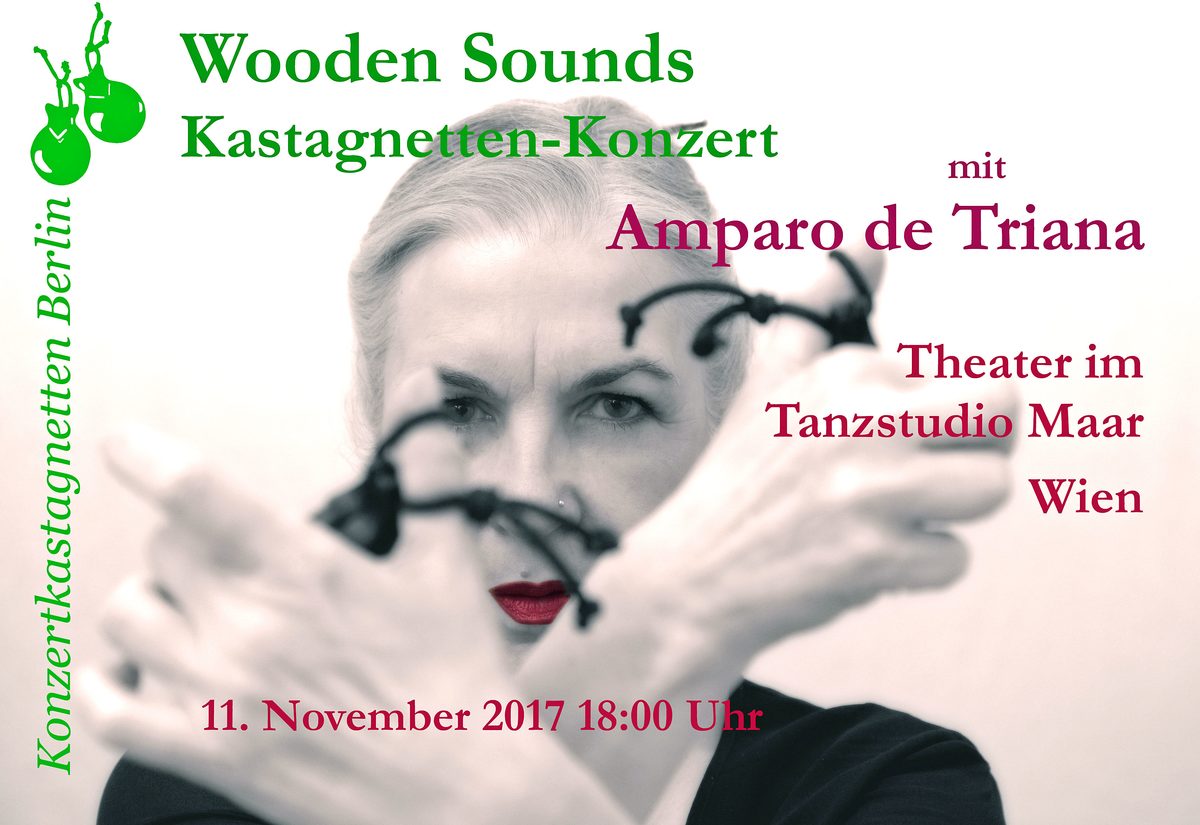Our castanets each consist of 2 pairs. Each castanet is similar to a shell, so both halves together are called a shell – ‘concha’ and each half a leaf – ‘hoja’. At the top of the so-called ears we have 2 holes through which our cords are pulled. This way you can attach them to your thumb or middle finger, depending on your playing technique. Instructions for making a knot can be found in the block Castanet Knot.
Each castanet consists of 2 halves, the leaves – ‘hojas’, together they look a bit like a shell – ‘concha’. At the top of the curve you find the bridge – ‘puente’, which forms the transition to the ears – ‘orejas’.
The ears – ‘orejas’ each have a hole through which you pull the cord. This cord is tied with a special knot.
Below the bridge – ‘puente’ – you find a triangle, a peak – ‘pico’ – on most castanets. This ‘pico’ plays no role in the sound, it is simply an ornament.
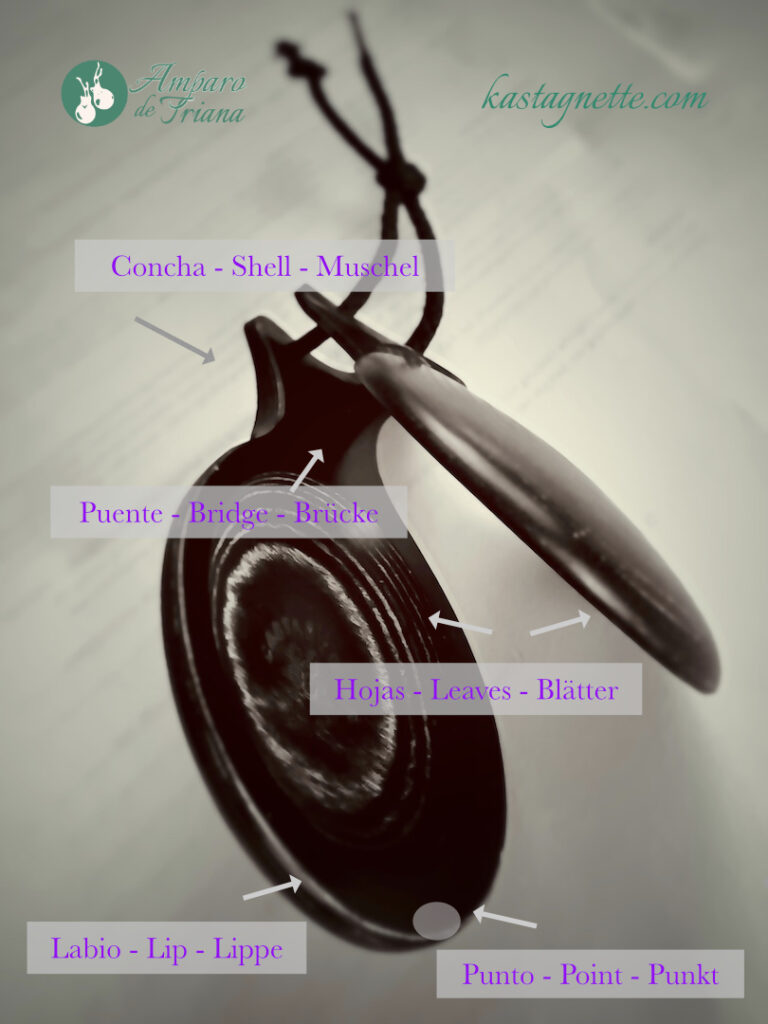
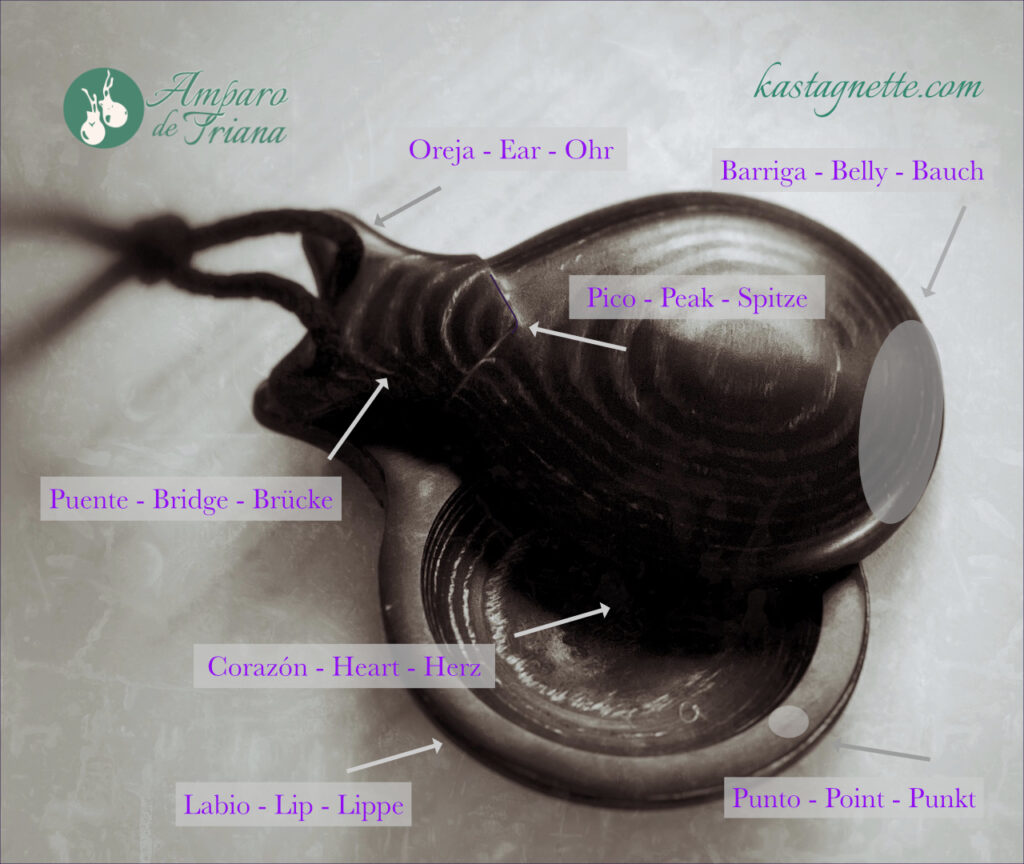
On the outside at the lower end of the ‘hojas’ is the belly – ‘barriga’. This is where the two castanets should meet for most of the ‘posticeos’. You get the best sound for posticeos here. But there are a large number of different ‘posticeos’, some of which are beaten with other techniques.
On the inside of the two ‘hojas’ there is a hollow, the heart – ‘corazón’. The ‘corazón’ is surrounded by the lip – ‘labio’. There must be a gap between the two ‘labios’, both ‘hojas’ only lie on top of each other at the bottom in the middle at the point – ‘punto’.
There are castanets in very different shapes and sizes, and made of very different materials. The most common is wood, synthetic materials on a base of textile called ‘tela’ or of a fibre fabric, usually glass fibre, called ‘fibra’.
For concert castanets, castanets made of different types of wood are particularly suitable. In the past, the grenadilla wood ‘Granadillo’, a tree of the dry forests and savannahs of Central and East Africa, was particularly popular. In the meantime, this tree is protected and may no longer be imported. Other types of wood are beech, oak, ebony, boxwood, rosewood …..
But there are also very good castanets made of different synthetic materials:
‘Tela’ (a synthetic material on a base of tissue) has a warm tone, sound colour are much harder to work out, but this material is not as sensitive to weathering as the natural material wood.
‘Fibra’ (made of a fibre material) has a clear, loud tone, and is also less sensitive to temperature fluctuations and varying humidity. Sound colours can hardly be achieved with these castanets.
Castanets are made by specialized instrument makers, a craft industry. Sometimes these highly skilled crafts have existed in one family for several generations, such as Castañuelas del Sur in Seville. But more about that in a later blog.
